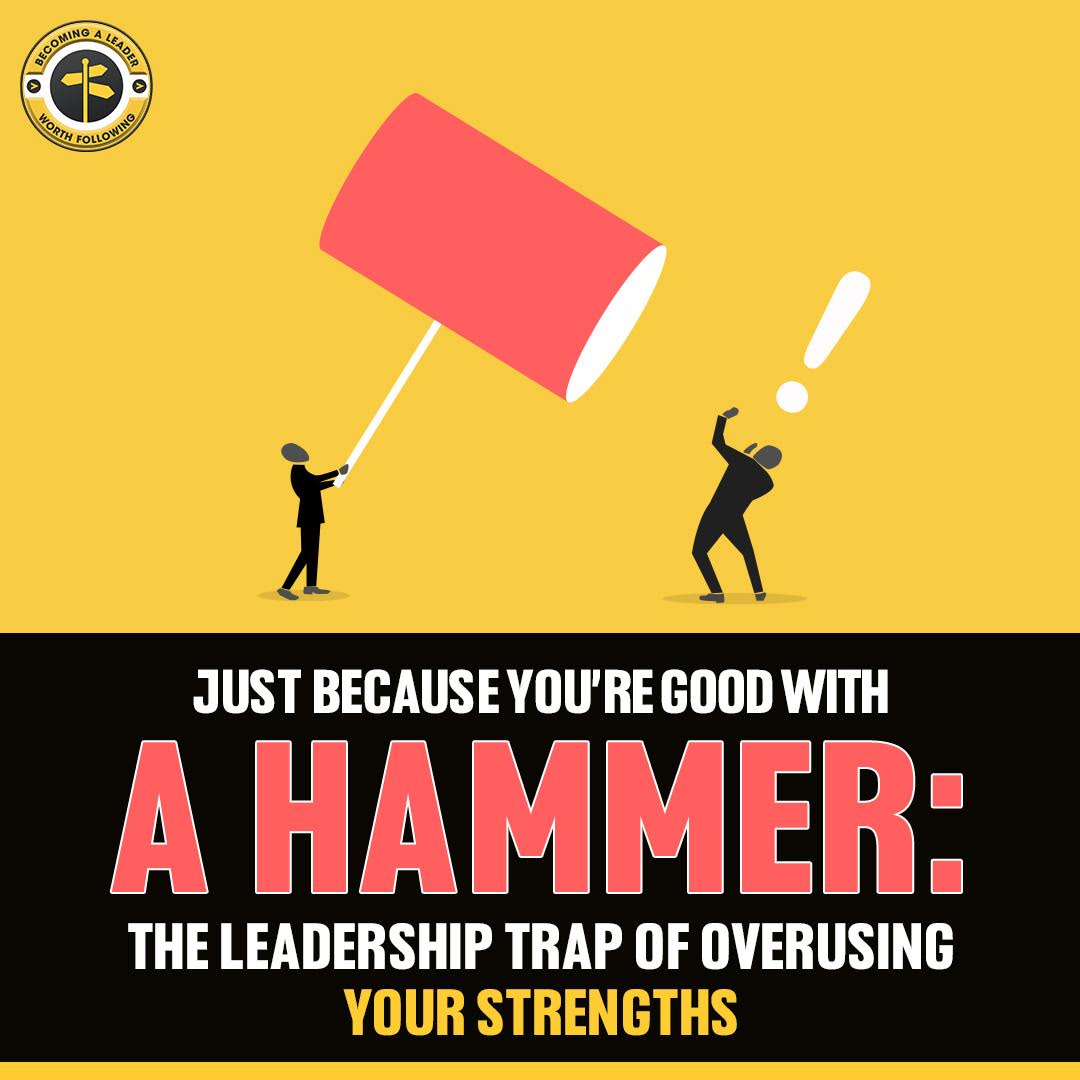As leaders, we often develop a set of tools and strengths that help us succeed, skills we’ve honed through experience, training, or just natural instinct. Some of us are visionaries. Others are strong communicators, motivators, or problem-solvers.
But here’s the catch: the very strength that propels you forward as a leader can also become a limitation, especially when it’s used in the wrong context.
One powerful metaphor to remember?
“If you’re good with a hammer, everything starts to look like a nail.”
The “Mr. Fix-It” Trap in Leadership
Many leaders, me included, fall into the habit of fixing things. Whether it’s broken processes, struggling team dynamics, or misaligned strategies, our first instinct is to jump in and make it better.
But here’s the problem: Not everything is broken. And not everything needs you to fix it.
When you approach every situation as a problem that needs solving, you may inadvertently create more chaos than clarity. Sometimes, in trying to fix what isn’t broken, you risk damaging what’s already working.
Leadership Is About Timing and Awareness
Knowing your strengths isn’t enough. The real art of leadership lies in knowing when and how to use them. Being a fixer is great when something truly needs fixing. But when everything looks like an opportunity to jump in, take control, and “improve” things, you might miss out on the power of delegation, trust, and quiet leadership.
Sometimes the moment doesn’t call for a hammer. It calls for a listening ear, a guiding question, or even just the wisdom to step back and let others lead.
How to Avoid Overusing Your Strengths
Here are a few self-check questions to stay grounded as a leader:
- Is this actually a problem or just different from how I’d do it?
- Am I stepping in because it’s needed or because it’s familiar?
- What other leadership tools could I use here: listening, patience, collaboration?
- Am I allowing others the space to grow by not always “fixing” things?
Conclusion: Be More Than Just the Hammer
Leadership isn’t about always being the problem-solver. It’s about being situationally aware, emotionally intelligent, and willing to flex into different roles when the moment calls for it.
So yes, own your strengths. Be proud of them. But don’t let them run the show. Because just because you’re good with a hammer doesn’t mean everything is a nail.



